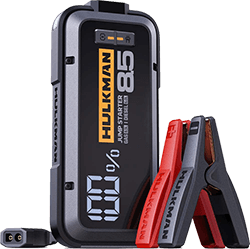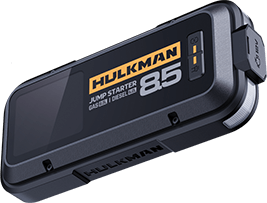Recent Articles
-
Understanding Lithium Battery Charging: Principles, Challenges, and How Hulkman Mega Engineers a Smarter System September 29, 2025
-
What Are Lithium Battery Cycle Counts and How to Extend Them? September 25, 2025
-
How to Properly Care for Lithium Battery Products September 24, 2025
Featured Products
note
Understanding Lithium Battery Charging: Principles, Challenges, and How Hulkman Mega Engineers a Smarter System
Lithium batteries power everything from drones and film gear to medical devices and off-grid energy systems. Yet the charging process behind them is often misunderstood — especially when users expect “fast charging” without realizing why intelligent power management is critical for longevity and safety. This article breaks down how lithium batteries actually charge, why charging slows down, and how Hulkman Mega power stations optimize performance through engineering-grade control systems designed for demanding users.
In this article, we’ll cover:
- How Lithium Batteries Charge — The Universal CC/CV Principle
- Why Different Lithium Chemistries Charge Differently
- Why Charging Slows Down — It’s Not a Limitation, It’s Protection
- Not All Chargers Are Equal — Matching Function to Application
- How Hulkman Mega Power Station Elevates Charging to an Engineering Advantage
- Final Thoughts
How Lithium Batteries Charge — The Universal CC/CV Principle
Across different chemistries such as LFP (LiFePO₄), NCM/NMC, LCO, and LMO, the charging process follows the same fundamental pattern:
CC-CV: Constant Current → Constant Voltage
Constant Current (CC): The battery is charged at a fixed current until it reaches its cutoff voltage (e.g., 3.65 V for LFP, 4.20 V for NCM). This is the fastest portion of charging.
Constant Voltage (CV): Once the cutoff voltage is reached, current is gradually reduced to prevent stress on electrodes. Charging ends when current drops to C/10–C/20 (e.g., a 100 Ah cell finishes around 5–10 A).
Pre-Charge Stage (Safety Layer): If a cell is deeply discharged (<2 V), charging begins with a trickle current to avoid lithium plating, copper disolution, and internal short risk. During this process, lithium ions migrate from cathode to anode, while electrons flow through the external circuit to maintain charge balance. That’s the electrochemistry in motion — but the real-world behavior depends on battery chemistry.
Why Different Lithium Chemistries Charge Differently
|
Typical Cutoff Voltage |
Fast Charge Range |
Key Limitation |
|
|
LFP (LiFePO₄) |
3.65 V |
0.2–1 C |
Flat voltage plateau makes charge estimation difficult |
|
NCM (Nickel Manganese Cobalt) |
4.10–4.20 V |
0.2–1 C |
Must limit voltage to reduce oxygen release at high SOC |
|
LCO (Lithium Cobalt Oxide) |
4.20–4.35 V |
0.2–1 C |
High-voltage versions require reinforced electrolytes |
|
LMO (Lithium Manganese Oxide) |
4.20 V |
0.2–1 C |
Manganese dissolution increases above 4.1 V |
LFP is particularly challenging for battery management. Its voltage remains nearly constant between 20–80 % SOC, making it difficult for a system to “guess” how full it is based on voltage alone.
To compensate, BMS of LFP needs use two extra mechanisms:
Voltage Calibration — Performing a low-current full charge to allow all cells to evenly reach 3.65V.
Active Balancing — Redistributing energy across cells to reduce voltage delta to <10 mV, ensuring consistent behavior in the next cycle.
Why Charging Slows Down — It’s Not a Limitation, It’s Protection
Users often wonder: “Why does 0–80% charge quickly, but the last 20% takes forever?” It’s not inefficiency — it’s physics and safety logic at work.
Three Technical Bottlenecks
|
Limitation Type |
Cause |
Result |
|
Ion Transport Saturation |
As graphite anode becomes full, lithium diffusion slows by 10× |
Current must be reduced |
|
Polarization Thresholds |
Voltage rise per additional ion becomes critical near full |
System must keep polarization <50 mV |
|
Thermal & Chemical Risk |
Excessive current → lithium plating or oxygen release |
Fast charge is intentionally slowed |
Additionally, BMS (Battery Management System) reduces current during:
- Low temperature (<5 °C) : Prevent plating
- High temperature (>45 °C) : Avoid thermal runaway
- Over-discharged cells (<2 V) : Soft-start only
- Cell voltage imbalance (>10 mV) : Force balancing
So charging is not just power in — it’s negotiation between electrochemistry and safety thresholds.
Not All Chargers Are Equal — Matching Function to Application
A high-capacity lithium system must adapt to all these scenarios — from high-current discharge to precision balancing. This is where charging intelligence, not just wattage, makes the difference.
|
Charger Type |
Main Purpose |
Typical Specs |
|
Jump Starter |
Burst current for engine ignition |
200–1000 A peak |
|
Trickle Charger |
Long-term float or maintenance charging |
0.1–1 A |
|
Home Energy Station |
Continuous load + multi-stage charging |
400 W–3 kW |
|
Outdoor EV Charger |
Rapid DC or AC fast charging |
7–480 kW |
How Hulkman Mega Power Station Elevates Charging to an Engineering Advantage
Hulkman Mega is not just a storage device — it’s a smart electrochemical system.
Adaptive CC/CV Logic: Dynamically tuned based on cell impedance, temperature, and voltage deviation.
Automatic Derating System: Reduces output when environmental or thermal risk is detected — preserving both battery and connected equipment.
Thermal-Aware Charging Strategy: Real-time monitoring prevents arrhenius-driven degradation, keeping internal stress low.
High-Purity Power Output (Pure Sine Wave): Ensures chargers on the output side receive stable input, protecting downstream devices.
This is not just compliance with lithium battery standards — it’s engineering with foresight.
Final Thoughts
Lithium charging is often oversimplified as “fast or slow.” In reality, it’s a controlled electrochemical process that must balance speed, safety, and longevity. Cheap systems push current — Hulkman Mega orchestrates it.
For users who demand power that behaves like engineered equipment — not just a battery in a box — charging intelligence is not optional. It’s the foundation of reliability.
That’s the philosophy built into Hulkman Mega.
Learn more and use code from social media to get Mega hidden discount.






















